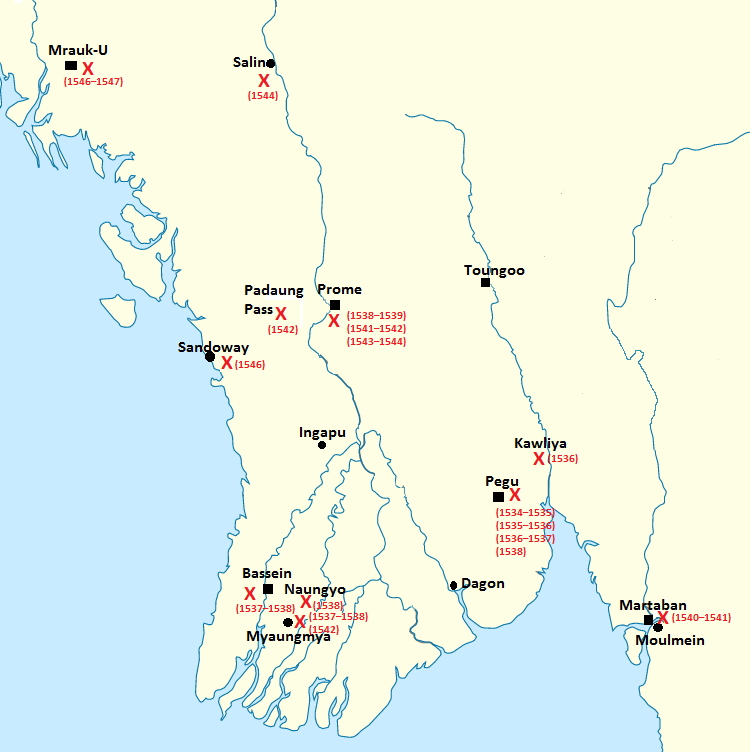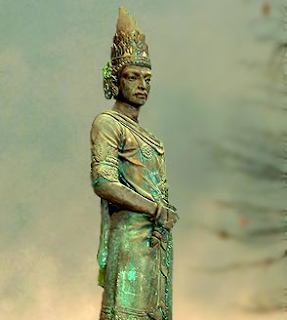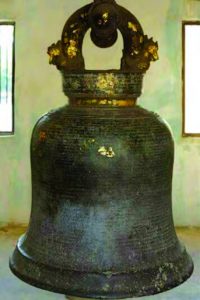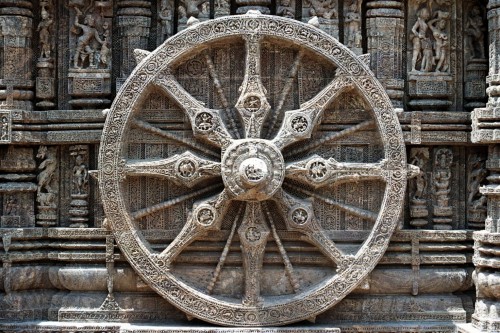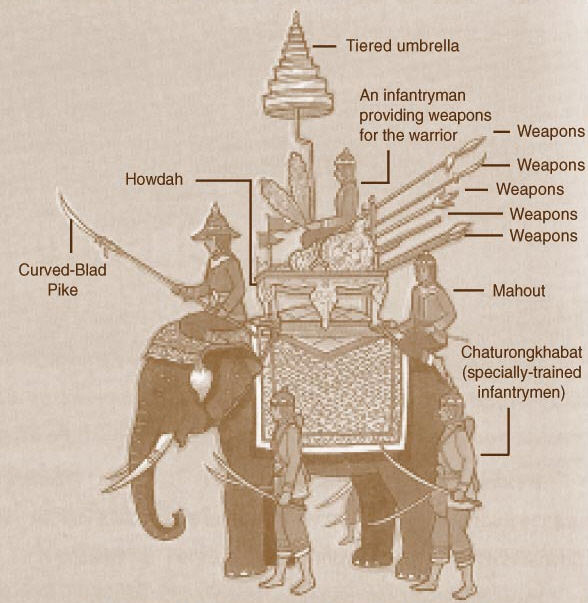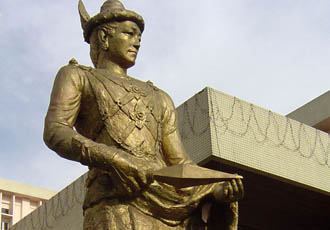The Kings of the Toungoo Empire
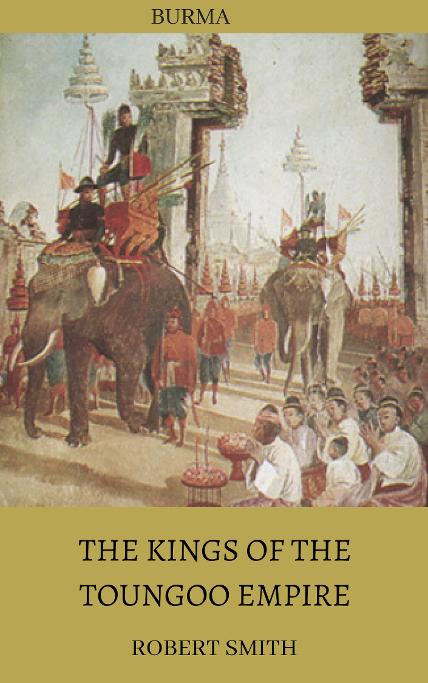
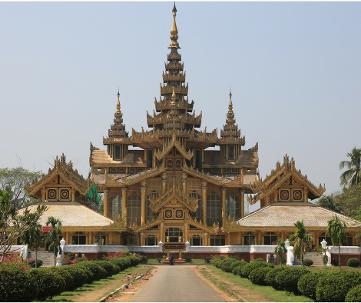
The Kanbawzathadi Palace, Pegu, Myanmar was firstbuilt for King Bayinnaung in 1566. It was burned down in 1599 as the First Toungoo Empire faded from history and was reconstructed 1990-92.
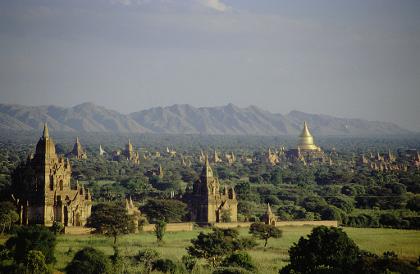
By Corto Maltese 1999 - Originally uploaded to Flickr as View over the plain of Bagan, CC BY 2.0, https://commons.wikimedia.org/w/index.php?curid=5944871
Pagan was the first centralized authority in Burma, gradually absorbing neighboring states and unifying the Irrawaddy valley and its periphery. In the mid 1050's, King Anawrahta founded the Pagan Empire. During the 12th and 13th centuries, the Pagan Empire and the Khmer Empire, to the east, were two main powers in mainland Southeast Asia. The Burmese language and culture became dominant in the upper Irrawaddy valley, slowly replacing the Pyu, Mon and Pali by the late 12th century. Theravada Buddhism gradually began to spread all levels of society although existing religious practices, including animism, remained in place. Pagan's rulers and wealthy built over 10,000 Buddhist temples in the Pagan region. Finally continuing Mongol invasions toppled the kingdom in 1287.
King Kyansittha, the second king of the Pagan ( or Bagan) Dynasty, is regarded as a great ruler who consolidated the Bagan Kindom founded by his father, King Anawrahta. When King Anawrahta died in AD 1077 the building of the great Shwezigon Pagoda begun in 1050 at Nyaung-Oo near Bagan remained uncompleted.
The Shwezigon is a solid gilded stupa. Shin Arahan, the Buddhist Primate and the royal teacher had urged King Kyansittha to complete this pagoda soon after he came to the throne. King Kyinsittha organized all ranks of his subjects, to work together and to contribute their labor as an act of merit. They finished the pagoda in seven months and seven days.
It is recorded in the chronicles that "Shwezigon is famous in the world of men and the world of spirits as far as the world of the Brahmas (Celestial beings)."
Opposite: Pagan Empire war mural from the 15th century CE.
The decline of Pagan as a political center in the 13th century ushered in a period of almost three centuries of internecine warfare and internal division. Some short-lived kingdoms arose, only to be attacked by their adversaries who typically plundered the capital and destroyed religious buildings and written records.
The Kingdom of Ava came to dominate this warring period. Founded by Thado Minbya in 1364, Ava saw itself as the new Pagan Kingdom. To establish itself in this role it warred constantly wars against the Mon Hanthawaddy Kingdom in the south, the Shan States in the north and east, and the Rakhine State (Arakan) in the west.
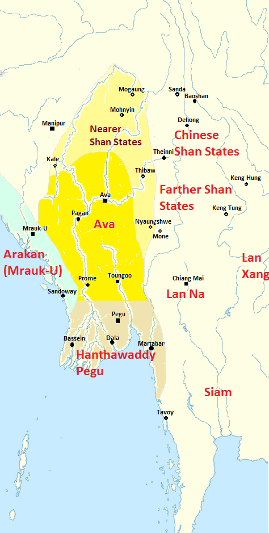
Burma in 1450. By Hybernator - created using Microsoft Paint, CC BY-SA 3.0, https://commons.wikimedia.org/w/index.php?curid=33794688
The Kings of Ava proclaimed that they were “Chakravartin Kings” or “Universal Monarchs” by titling themselves as “Hsinbyushin/Hsinbyu Thahkin”, which means Lord of the “White Elephant” or the king possessing the “White Elephant.”
Art and architecture continued to follow those used in the Pagan Period. Gradually Indian influence declined to be replaced with a Burman style that harked back to the Pagan Period but was uniquely Burmese. The Ava period saw a distinct Burman style and fashion evolve within the royal court.
In 1527, the Confederation of Shan States, led by the state of Mohnyin in alliance with Prome, sacked Ava. The Confederation placed nominal kings on the Ava throne and ruled much of Upper Burma. As Prome was in alliance with the Confederation, only Toungoo in the southeastern corner, east of the Bago Yoma mountain range remained as the last holdout of independent Bamar people.
Opposite: An engraving of the royal palace at Ava. Ava was founded in 1365 on an artificial island between the Irrawaddy and Myitnge rivers, near modern Mandalay. It was capital of Burma for a total of 360 years, over four periods between 1599 and 1839; the second of these periods began in 1635, when King Thalun transferred his capital from Pegu. Ava was eventually destroyed by an earthquake in 1839, after which King Tharrawaddy abandoned it for a last time and moved to Amarapura. (Source: Tales of Asian Venturers.)
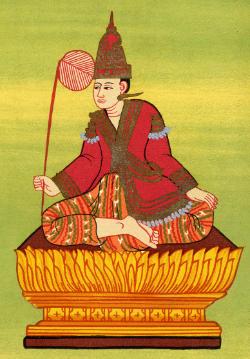
Nat (of the spirit world) of Mingyi Nyo by Sir Richard Carnac Temple [Public domain], via Wikimedia Commons
After seizing the throne of Toungoo in 1486, Mingyi-Nyo built an ever widening sphere of influence in Upper Burma. He conquered the area of Pyinmana during the 1490's and attacked the rebellious state of Yamethin on behalf of his overlord the king of Ava. The succession struggle in Ava during 1501-03, accompanied by an invasion and occupation of the northern part of the Mu River valley led the new king of Ava to draw Min-gyi-nyo closer to him by offering a marriage alliance and a gift of strategically important territory near Kyaukse.
Mingyi Nyo rebelled against Ava who responded by sending a military force against him, which he intercepted and defeated . The king of Toungoo formed an alliance with Prome and attacked towns in the Myingyan area near Pagan. A joint military force was sent by Ava and Hsipaw and defeated him. In 1510, the king of Avawas under almost constant attack by Shan forces. Mingyi Nyo remained in Toungoo, where he built a new capital, until 1523. It was then that he felt secure enough to raid Pegu to the south with little success. He died in 1531, leaving a secure kingdom considering the events of the day.
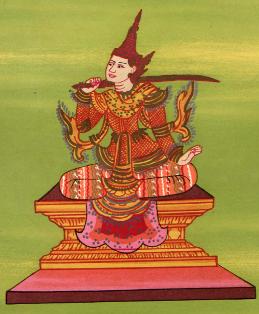
King Tabinshwehti from"The thirty-seven nats, a phase of spirit-worship prevailing in Burma", by Sir R. C. Temple
The future King Tabinshwehti was born in Toungoo to King Mingyinyo of Toungoo and his concubine. The 56-year-old king named him after the “Unitary Golden Umbrella”, the golden umbrella being the sacred symbol of Burmese kings. The crown prince grew up having to live up to a prophecy made at his birth, which claimed that he would grow up to be a great warrior.
The prophecy stated that Tabinshwehti would be the reincarnation of a prince named Minyekyawswa who was put to death by his father King Dhammazedi of Hanthawaddy . Tabinshwehti is purported to have prayed the same prayer as Prince Bawlawkyantaw of Hanthawaddy before the latter was put to death by his own father King Razadarit in 1390. Minyekyawswa of Ava was believed to be the reincarnate of Prince Bawlawkyantaw who grew up to be the nemesis of Hanthawaddy. Tabinshwehti, believed to be the reincarnate of Minyekyawswa of Hanthawaddy, the prophesy claimed, would be the nemesis of Hanthawaddy.
At the start of his reign King Tabinswehti determined to have his 'Ear-boring Ceremony" in Pegu (Bago) which at the time was the capital of his enemy the Mons.
Bayinnaung is said to have chosen the five hundred soldiers who would accompany the king by driving a pin through the right thumb of each and choosing only those who did not wince, starting with himself.
In 1535, King Tabinshwehti continued his father’s expansionist plans by invading the Pegu kingdom, capturing the city of Bassein in the Irrawaddy delta. Four years later Pegu fell, and Takayutpi, the Pegu king, fled to Prome.
With the fall of Pegu, King Tabinshwehti moved the center of his kingdom from inland Toungoo to coastal Pegu, which gave him access to international maritime trade, firearms and foreign mercenaries.
The move of his capital to Pegu not only changed King Tabinshwehti’s mandala or field of power, but also made him adapt to the cultural differences between Burmese and Mon culture. Pegu had long been the center of politics, the economy, culture, the arts and Buddhism for the ethnic Mon people long before the rise of the first Toungoo empire.
Following his defeat in Ayutthaya, King Tabinshwehti was introduced to wine by a Portuguese mercenary. King Tabinshwehti was addicted and his health rapidly deteriorated. Rather than fighting, the mercenary in question became the King’s exclusive source of wine. The King stopped going to war, stopped running the country and gave his wine maker a Burmese court lady as a wife. Court officials tried to get Bayinnaung to step in and take the throne but, because of his great respect for and loyalty to King Tabinshwehti, he would not. He did, however, pay off the mercenary and send him home. Not everyone was as loyal and on April 30, 1550 the King was beheaded while sleeping in his tent by two assassins. He had nominated Bayinnaung to succeeded him but the Toungoo empire quickly fell apart without his leadership. King Bayinnaung rebuilt the empite of Tabinshwehti leading Burma to its period of greatest territorial expansion in the years to come.
"Upotata, the mount of King Bayinnaung; clad in leather armor, ornamented in religious amulets and precious gemstones, advanced on Chechin, the mount of Smim Htaw. The elephants and their surrounding soldiers clashed. As battles raged across the front lines, King Bayinnaung and Smim Htaw knew that the outcome would be decided here.
The elephants were equally matched, and they clashed their tusks as they fought for supremacy. King Bayinnaung and Smim Htaw, sitting on the nape of the neck behind the elephant's ears exchanged glancing blows as the mahouts in their howdahs high on the elephants' backs sought to gain the advantage. The advantage was gained by Upotata when he broke the tusk of Smim Htaw's mount Chechin, causing the elephant to rear in pain and retreat.
Smim Htaw, realizing he was beaten, dismounted from his elephant, mounted a horse and fled the battlefield. Many of his followers, upon seeing him go retreated with him.
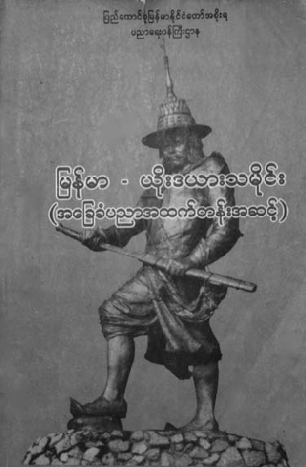
Bayinnaung in arms, cover of the high school version of the Myanmar-Thai History textbook (MME 2009).
King Bayinnaung regrouped before sending his brother Minyezithu in pursuit. The king's brother chased Smim Htaw, first to Danupyu and then to Bassein. The governor of Bassein, seeing the superior force of Smim Htaw outside his city and not knowing of the battle, opened the gates. The pursuing forces gathered outside the city walls and were reinforced by the troops of the king's younger brother Thadodamayaza of Prome. As King Bayinnaung's army converged on Bassein, Smim Htaw fled leaving many of his war elephants, armaments and ammunition behind. The governor, Thamein Bya Bya Bait gave these to the brothers of King Bayinnaung, who rewarded him well." (Extract from "The Kings of the Toungoo Empire" by Robert Smith.)
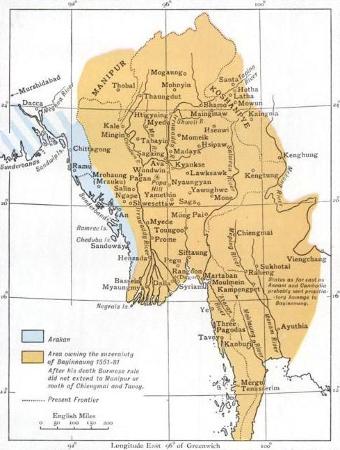
By GE Harvey - History of Burma, GFDL, https://commons.wikimedia.org/w/index.php?curid=11098419
During his 31-year reign, 1550 to 1581, which has been called the "greatest explosion of human energy ever seen in Burma", (G.E. Harvey.) King Bayinnaung forged the largest empire in the history of Southeast Asia. At its greatest extent it included much of modern-day Burma, the Chinese Shan states, Lan Na, Lan Xang, Manipur and Siam.
One of his greatest legacies was bringing the Shan states into the Irrawaddy-valley-based kingdoms. After the conquest of the Shan states in 1557–1563, the king put in an administrative system that reduced the power of the hereditary Shan saophas, and brought Shan customs in line with low-land norms, and in doing so eliminated the threat of Shan raids into Upper Burma. Among his many religious changes he forbade slaves being cremated alongside the deceased Shansaopha, and the outlawing animist religious practices.
The Bell of King Bayinnaung is inscribed in 3 languages; 43 lines in Myanmar language, 35 lines in Mon language and five lines in Pali language. Recorded on the bell, are the name of the donor, their endeavor for the country, their meritorious deeds, prayers, and occupied regions with the dates; the date of ascending the and the date the bell was donated.
The Bell is located at the Shwezigon Pagoda in Bagan and was donated by King Bayinnaung in 1557 AD. According to the inscription record on the bell, King Bayintnaung "had cast a bell and donated at the Shwezigon Pagoda which was one of the product of meritorious deeds of King Anawrahta and Kyansittha on 23 May 1557."
The Bayinnaung Bell is 3 feet 8inches high, girth is 3 ft. 6 in., girth of the base is 10 ft. 3 in., thickness is 6 in., diameter is 1ft. 7 in., height of the hanger (paunggaing) is 1ft. 7in, girth of the hanger is 1ft. 4 in. and the girth of the neck is 4 ft. 1 in.
King Bayinnaung charged his First Minister, Binnya Dala with designing and building the Kanbawzathadi Palace in Pegu. The palace was burnt down by a Mon rebellion a few years later, only to be built again. It was burned down as the city fell in 1599. The modern replica was built in 1990 - 92.
Winthin Taikwun Maha Sithu - Yazawin Thit Chronicle (first published in 1798) Plan of the city of Pegu, 1568 (in Burmese)
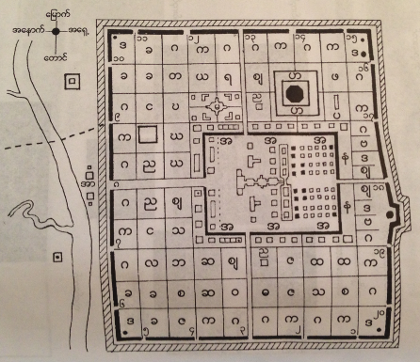
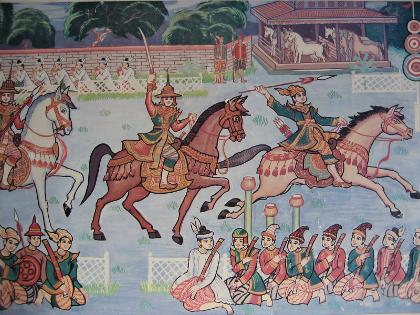
Opposite:Burmese horse soldiers practicing for war.
Wagaung at the English language Wikipedia [GFDL (http://www.gnu.org/copyleft/fdl.html)
A Burmese Regatta. Warfare was heavily dependent on journeying by rivers. It was common practice within the kingdoms of South-East Asia to hold regattas. These ensured that men were ready for war when called upon.
Wagaung at the English language Wikipedia [GFDL (http://www.gnu.org/copyleft/fdl.html) or CC-BY-SA-3.0 (http://creativecommons.org/licenses/by-sa/3.0/)], via Wikimedia Commons
The story of King Bayinnaung's conquest, and re-conquest of Ayutthaya is told from both the Siamese perspective in "The Kings of Ayutthaya," and from the Burman perspective in "The Kings of the Toungoo Empire."
It is an epic story of the gunpowder kings, tradition, religion, huge armies, Machiavellian cunning, and destruction and death on a staggering scale.
Statue of Bayinnaung in front of the National Museum of Myanmar.
King Bayinnaung was a fierce proponent of Theravada Buddhism ("doctrine of the elders"), the oldest and most orthodox of Buddhism's three major sects. It is regarded as the belief closest to the one taught by The Buddha himself, it is based on the recollections of The Buddha's teachings amassed by the Elders—the elder monks who were Buddha's companions. The doctrine of Theravada Buddhism can be found in the three-part Tipitaka. The first of the three baskets sets out the discipline governing the monastic order. The second presents the sermons or discourses of the Buddha and contains the dharma (literally, doctrine). The third comprises the commentaries and explications produced by learned monks in the centuries after the death of the Buddha.
Chakravartin (Sanskrit cakravartin, Pali cakkavattin) is Sanskrit term used to refer to an ideal universal ruler who rules ethically and benevolently over the entire world. Such a ruler's reign is called sarvabhauma. It is a bahuvrīhi, figuratively meaning "whose wheels are moving", in the sense of "whose chariot is rolling everywhere without obstruction". It can also be analysed as an 'instrumental bahuvrīhi: "through whom the wheel is moving" in the meaning of "through whom the Dharmachakra ("Wheel of the Dharma) is turning" (most commonly used in Buddhism). King Bayinnaung aspired to be Chakravartin.
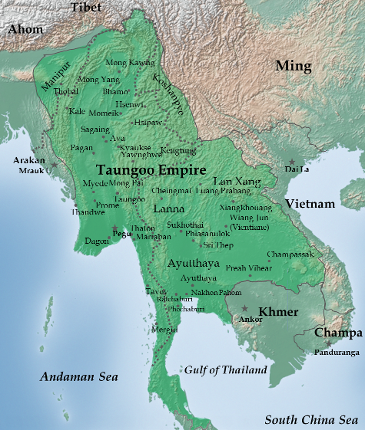
King Bayinnaung succeeded in reunifying the territories of the Pagan Kingdom for the first time since 1287 and in incorporating the Shan States for the first time. At its peak, the First Toungoo Empire also included Manipur, the Chinese Shan States, Siam, Lan Na, and Lan Xang. But the largest empire in the history of Southeast Asia collapsed in the 18 years following Bayinnaung's death in on 10 October 1581 while he was preparing to invade Arakan, in part inspired by his wish to complete the invasion where King Tabinshwehti failed.
His eldest son and heir-apparent Nanda Bayin took over the throne without incident, however, the empire, which Bayinnaung had built on military conquests and maintained by both military power and personal relationships with the vassal rulers, was to crumble soon after.
The extent of the Toungoo Empire c. 1590. Taungoo Empire at its highest extent during the reign of King Bayinnaung (1551-1581) By Soewinhan - Own work. Background map is taken from www.naturalearthdata.com (public domain: Terms of Use)., CC BY-SA 3.0, https://commons.wikimedia.org/w/index.php?curid=17740679
King Nanda Bayin was crowned one month after his father's death. At the age of forty-six, the new king inherited the largest empire ever seen in Southeast Asia, but it was an empire bound in loyalty to his father. In order for King Nanda Bayin to secure the Toungoo Empire, he needed to ensure that those who had pledged loyalty to his father would be equally loyal to him.
Upon his succession to the throne he was faced by minor insurrections, but the most concerning was a rebellion by his uncle, the Viceroy of Ava. He was able to subjugate Ava, but it took many years.
Prince Naresuan of Ayutthaya, hearing of a plot for the Upayaza Mingyi Swa to kill him declared independence in 1584.
King Nanda Bayin sent to send his army to Ayutthaya five times, in 1584, 1585, 1586, 1590 and 1592: Myanmar’s troops suffered heavy losses in every battle. In his fifth campaign against Ayutthaya, following the advice from one of his ministers, Nanda Bayin sent his crown prince to the battlefield.
In the Myanmar chronicles, it is mentioned that, on 30 December 1592, during the chaos of the battle, the crown prince was hit by a canon shell and died over the neck of his war elephant. The Thai chronicles describe an elephant fight between the two men and it is the Thai version of events that I have used in my books.
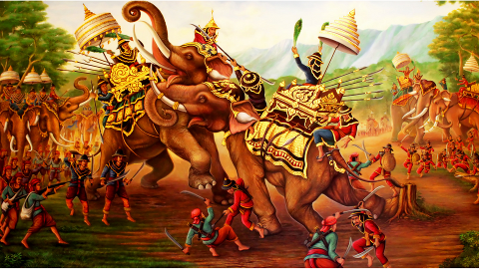
“My brother, whatever is our royal older brother doing under the shade of a tree? Come forth and let us fight an elephant duel for the honor of our kingdoms. No future kings will do what we are going to do?” asked King Naresuan of the Burmese Crown Prince. (Extract from the novel King Naresuan the Great by Robert Smith.)
“Stand, stand,” said General Manu. “I am told you have come from near Pegu to find me.”
“We have my Lord. It has been a long and arduous journey, particularly for the girl here,” said the headman.
“What have you to say?” he asked.
“Please may I let the girl speak?” asked the headman. General Manu acknowledged the request.
“My name is Ara. My village is Hmwabi. It is no more. The soldiers of King Bayin returned to our village demanding their taxes,” said Ara more bravely than she felt. “My grandfather, our headman, and one well into his old age said we had no more to give. You have taken our young men for the army, and you have taken the young women. We have no one left to till the fields. We are a village of old men and children. You have taken everything he said. He expected to die.”
The soldier laughed at my father.
“Old man, you have much more to give,” he said. He and his soldiers stripped my clothes from me and raped me as my grandfather was forced to look on. I counted ten men who had their way with me.”
“How old are you child?” asked General Manu.
“I am nine years of age next month,” said Ara. She was visibly shaking but trying desperately not to cry in front of her lord.
“The soldiers left me naked on the ground as they set fire to our village and killed everyone in it, including my grandfather. The soldier came back to me and told me to tell everyone what had happened there today,” continued Ara.
“We have come to ask for your support and the support of King Naresuan,” said the headman, imploring the general. “Food prices are high, and food is scarce. Our young are being taken and conscripted into the army of King Nanda Bayin. They are even taking children as young as ten. As the king retreats, he gets more desperate. Some say he verges on madness. We ask that King Naresuan and you, General Phraya Manu Racha Si Salai, come to support the Mon people in ridding us of this tyrant.”
General Manu requested an audience with King Naresuan and Upparaja Ekathotsarot where he repeated the tale and the request that had been made.
“It appears that King Nanda Bayin is troubled,” said General Manu. “I understand from the headman that he withdrew Minye Kyawswa II from Ava to help him in the south, leaving the city under the administration of a chief minister and a military commissioner.”
“They will find it difficult to fulfill the role of a king. It appears that he is retrenching southwards,” said Prince Ekathotsarot.
“The Burman king is lessening his control on the north and the Shan states,” King Naresuan added. “They provide him with many soldiers for his army. This is a mistake on his part, and will be seen as a sign of weakness by those looking to profit from his demise and, be assured, that includes me.”
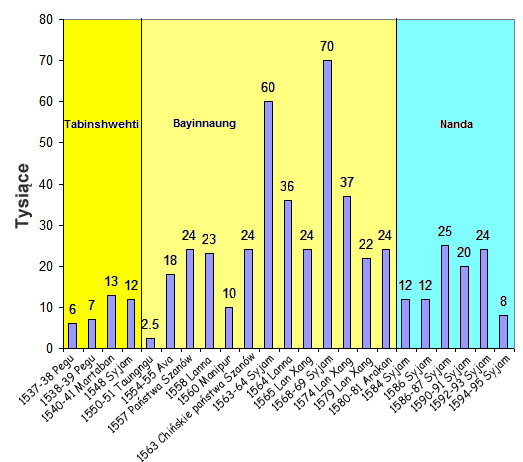
Burmese–Siamese War (1594-1605) Map showing Siam forces' advance towards Burma:
Red: Siamese invasion in 1594
Brown: Siamese invasion and retreat in 1595-1596
Yellow: Siamese invasion in 1599-1602
King Naresuan entering Pegu following its destruction by the Rakhine. Mural painting by Phraya Anusatchitrakon, Wat Suwandararam, Ayutthaya.
Army mobilisation per campaign, Toungoo Empire (1530–1599)The Royal Burmese Army's mobilization per campaign in the Toungoo Empire period (1530-1599) -- Source: Hmannan Yazawin (The Glass Palace Chronicle)
The figures are only those who were mobilized to the front; they do not include Palace Guards and Capital Guards who stayed behind. Minor campaigns and campaigns without an explicit mention of numbers are not included.
By Hybernator - Own work, CC BY-SA 3.0, https://commons.wikimedia.org/w/index.php?curid=17004743
Illustration from a 1706 Dutch edition of Ralph Fitch's account of his travels. In his account, Fitch (c.1550-1611) wrote of the Burmese "varellaes", or pagodas: "They be made round like a sugar loafe: some are as high as a church, very broad, some a quarter of a mile in compasse ... They consume in these Varellaes great quantity of golde, for that they be all gilded aloft, and many of them from top to bottom; and every ten or twelve yeeres they must be new gilded, because the rain consumeth off the golde, for they stand open abroad. If they did not consume their golde in their vanities, it would be very plentifull and good cheape in Pegu." (Source: Tales of Asian Venturers.)
Filipe de Brito e Nicote was a Portuguese adventurer and mercenary who was appointed the King of Arakan's governor in Syriam in 1599. He used his position to build up his forces and then rebelled, offering to serve Portuguese Goa as "Commander of Syriam" and "General of the Conquests of Pegu." His intervention in a war between Toungoo and Ava eventually led to Syriam's capture by Burma's King Anaukpetlun in 1613, when de Brito was executed. From the Company's perspective, his removal was well-timed; with Masulipatam established, they were well placed to secure a share of their own in the trade across the Bay of Bengal. (Source: Tales of Asian Venturers.)
King Nyaungyan Min was king of the Restored Toungoo Dynasty or Nyaungyan Dynasty of Burma from 1599 to 1605. He is regarded as the founder of the Restored Toungoo Dynasty for starting the reunification process following the collapse of the Toungoo Empire. A son of King Bayinnaung by a minor queen, Nyaungyan was appointed as governor of Ava by KingNanda Bayin.
As vassal rulers renounced their ties with King Nanda Bayinin 1597 onward, he too broke away by seizing Ava (Inwa). He avoided the wars to the south and consolidated his base in central and northern region. During his reign he conquered the cis-SalweenShan states until his death in 1605. His efforts paved the way for his eldest son and successor Anaukpetlun to restore major portions of the Toungoo Empire over the next two decades.
“It seems that the whole country is nothing but desert, and there is nobody left in this kingdom of Pegu.”
Du Jarric 1608. P626. Quoted in A History of South East Asia: Critical Crossroads. Anthony Reid.




